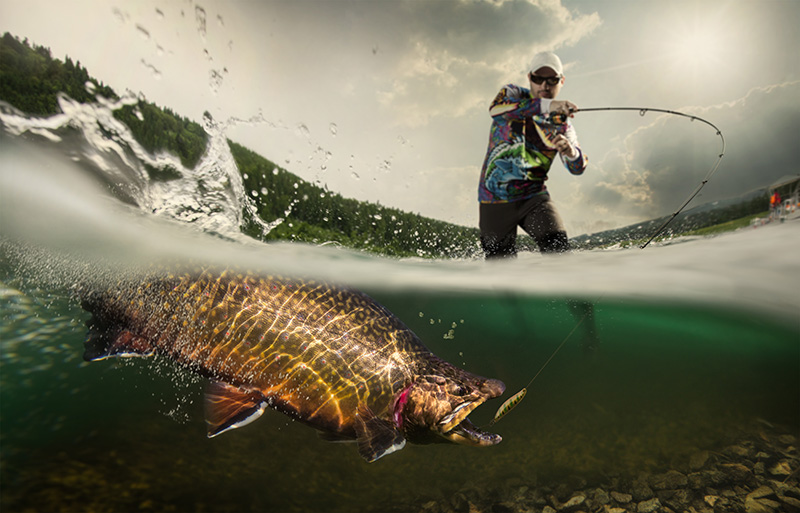Mistakes to Avoid while Fly Fishing Trout

Mistakes to Avoid while Fly Fishing Trout
As anglers, we all know how much fun it is to fool a fish into taking an artificial bait. We tease bass, walleye, northern pike, and musky with flashy baits and plastic that mimic their primary forage. When it comes to fly-fishing for trout in a cold-water stream that’s constantly moving, you add a whole new set of challenges. Trout are incredibly finicky at times, and your fly presentation must be spot on, looking as natural as the real bugs they feast on. However, there’s nothing more rewarding than lifting that fly line straight up and feeling the weight of the fish on the tiny fly you just offered them. Whether you’re a seasoned angler with a fly rod or new to the sport, we’re going to take a quick peek at some easy things to avoid as you plan and prepare for your trip.
BE PREPARED
Like any angling trip you plan, preparation is the key to having a successful outing. “One thing that I highly recommend for anglers heading out for a day of fly-fishing is to know your equipment”, said Ryan Koch, owner and head guide for Fly Fish Iowa. This applies equally to experienced and novice anglers.
Check your waders to ensure you won’t spend the day with soggy feet; inspect your rod, reel, and line to make sure they’re in good working condition. “Safety is also an important factor when heading out to fly fish Iowa’s trout streams”, continues Koch. “Having safety equipment with you, letting folks know where you’ll be, and also staying away from log jams, and other hazards in the river.” Other things to consider are the plants along the streams where we fish. Poison ivy or oak, as well as wild parsnip, which has become incredibly invasive, are things to look for. “You may not be wearing waders in July because the water is cold, but more to protect yourself from a bunch of poison plants.”
PRACTICE
If you’re new to the sport, practicing with your fly rod and making casts of about 20-30 feet in length will be more than enough for most streams in Northeast Iowa. “One of the things that anglers should keep in mind is to keep it simple”, noted Koch. “It’s very easy to overthink the process and equipment when it comes to fly-fishing”. As you make practice casts, don’t worry about tying on a fly. You’re really just casting the line and not the fly. The line does all the work and at the end of the cast, when you lay it on the water, the fly will land softly on the surface.
KNOW THE REGULATIONS
“It’s also important to know what the regulations are for any particular location you’re planning on fishing before you head out”, adds Koch. “Some states allow multiple hooks on a line while others may only allow one. In Iowa specifically, some stretches are catch-and-release only for brown trout, and then areas where you’re allowed to harvest a brown trout. So knowing local regulations on whether or not you can keep fish, how many, and what species are allowed will go a long way in making your trip a better one.”
KNOW WHAT YOU’RE FISHING FOR
Like any species of fish, weather plays a significant factor on days when we are successful and on other days when it really is a challenge. High pressures that usher in clear blue skies will cause fish to develop lockjaw. And while some will still take the bait, many more will not. And the same holds true on a day with low pressure, typically accompanied by an incoming weather system; fish will start to feed, and catching, at times, can be amazing.
Water temperature also plays a role, and it’s probably more pronounced in a trout stream. “There are some streams that you may not find what you’re fishing for”, continues the guide. “Say you’re fishing for rainbows in an area that was stocked, but now you’re fishing in August and the water temperature is 83 degrees. Those fish won’t be there; they will have moved downstream to cooler water.” It’s also helpful to reach out to local resources, whether it’s a fly shop in the area where you’re fishing or even a Des Moines fly fishing shop; they can help with information that can make your day more successful.
KEEP IT SIMPLE
Maybe you wake up one morning and decide that today is the day you take on fly fishing. Having done your research, confident and without any consultation, you slide into the seat of your car and make that trip to your local fly fishing supply store. Walking in with pride in your stride, you receive a greeting by a fly-fishing expert.
“Can I help you?”
“I’d like to look at getting completely outfitted for fly fishing”.
You explain to the young man that you have thoroughly researched your new craft and feel confident in the choices you’ve made. So, without hesitation, he outfits you with everything you need based on the requirements you laid out for him.
“Okay, sir, your total today will be $1,209.17 for everything”.
And like the movie Inside Out, your inner self is saying, “WAIT!” “WHAAAAT!?” On the outside, you smile with confidence and hand over your credit card.
While the scenario above may not be typical, we all have been in situations where we head to pick up a “few” things and walk away with way more than had been intended. And in some cases, it’s due to a very helpful store expert making suggestions that you had not even considered.
“At the end of the day, it really is just fishing”, said Koch. “We can overthink the entire process by trying to figure out what knot I should tie, what net I should carry, what kind of flies I should have, and the list goes on. By the time you’ve made say fifty decisions, you haven’t even hit the water!” Keeping it simple is better.
Summary
When I first started my adventure into fly-fishing, I was overwhelmed by the amount of equipment available. Then add the flies that are laid out in shop fly boxes, and you can see how easily it would be to overthink what you need. Flies that I would start with are simple bead-head nymphs, a San Juan worm, and a caddis pattern of some sort. Caddis are a significant source of food for trout. Another prevalent fly pattern is the gold-ribbed hare’s ear, which is very effective in Iowa streams. You can also pick these all up in various sizes to match the size of the forage the trout are chasing.
Remember that we are all part of the conservation chain when it comes to our natural resources in the state of Iowa. Pack out what you pack in, respect the area you’re fishing, and harvest responsibly. Tight Lines All!
BY BEN LEAL
September 2025
Learning the basics of fly fishing? Here is the perfect article for exactly that
Here is this month’s digital version of the Iowa Sportsman
Here is the Cattle/Dairy side of things


